UV sterilizers for aquarium: features, selection and use
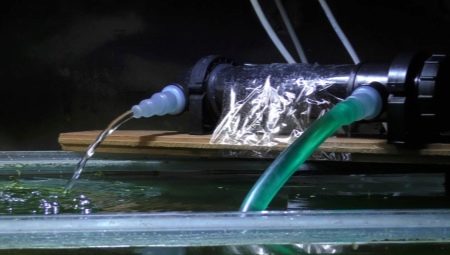
Not many people know that it is possible to destroy pathogenic bacteria and other microorganisms without any chemicals. For this, there are special UV sterilizers. They have long been actively and successfully used in medicine.
The UV sterilizer is also used in fish keeping. In what cases and is it worth it, in principle, to use something like this for your aquarium - let's figure it out.
What is it and how does it work?
The name "sterilizer" is not entirely correct. Rather, such devices help to disinfect, but they do not completely kill all living things. The fact is that in the aquarium, in the course of life and reproduction of fish, its own habitat is formed. Inside it are the inhabitants themselves, whom you have launched there, and their waste, and a whole world of various bacteria. The problem is that some of these bacteria can actually be disease-causing and harmful. Precisely because periodically it is recommended to disinfect this very environment.
Some aquarium owners try to achieve this with a simple water change, but it doesn't work. Microbes accumulate not only directly in the water itself, but also on algae, decorations, glass walls. Empirically it turned out that the task of disinfection is best done by an aquarium ultraviolet lamp.
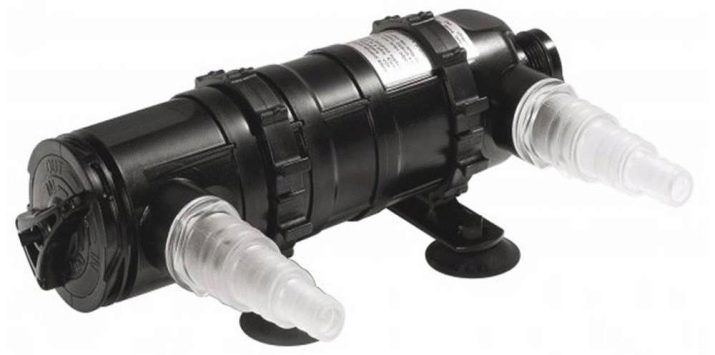
Ultraviolet radiation of 3 types arrives on our Earth, which differ in harmfulness and impact on humans and other creatures.
- Option A - the longest section of the region. The radiation range is from 320 and directly to 400 nanometers.These rays pass the atmosphere and reach the surface perfectly.
- Option B - 290-320 nanometers, is responsible for the production of vitamin D by organisms.
- The last and most dangerous option - 180-290 nanometers, does not reach the surface of the planet, constrained by the atmosphere. It is fatal to many inhabitants of the planet.
If we talk about a device for disinfecting water, then any of these beam options can be used in a UV sterilizer for an aquarium. The bacteria are defenseless against them. There is no specific protective layer, so ultraviolet light works great.
If you need such a disinfecting lamp, then you need to know a little about its features.
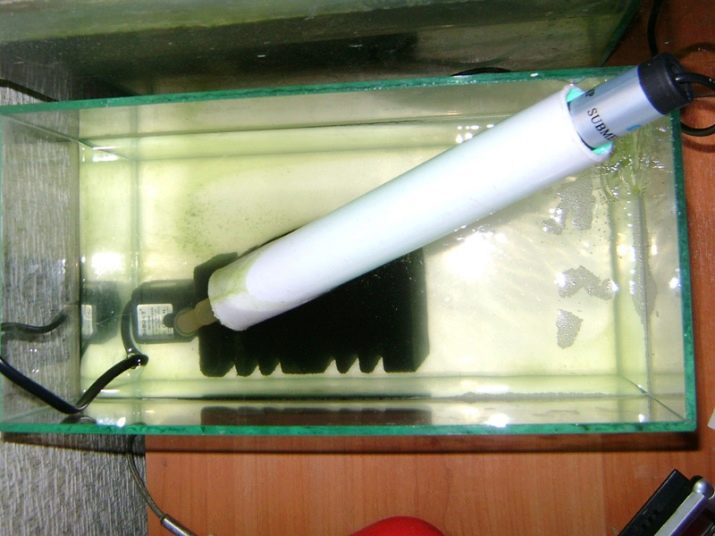
Benefit and harm
If the benefits of an ultraviolet lamp in helping to kill microorganisms in an aquarium are obvious, then it is worth considering the potential harm. It is not so easy to say about him, because he is very ambiguous, optional and not at all peculiar to everyone.
Speaking about the benefits, we immediately highlight the obvious and unambiguous factors.
- In a small home "sea" there will be much less unnecessary algae and other unpleasant "weeds" that have grown. And this is very important, because when there are too many of them, it not only looks ugly, but also really prevents the fish from swimming comfortably.
- There will be fewer microorganisms, which means the water will be cleaner. Turbidity won't build up as quickly as it used to, which is a wonderful bonus. In addition, there will be less unpleasant odor.
- In addition, and this is very important - in case of outbreaks of diseases among fish, you can quickly destroy the cause of their diseases and keep them alive and healthy. And the remaining beneficial microorganisms will help the fish grow faster.
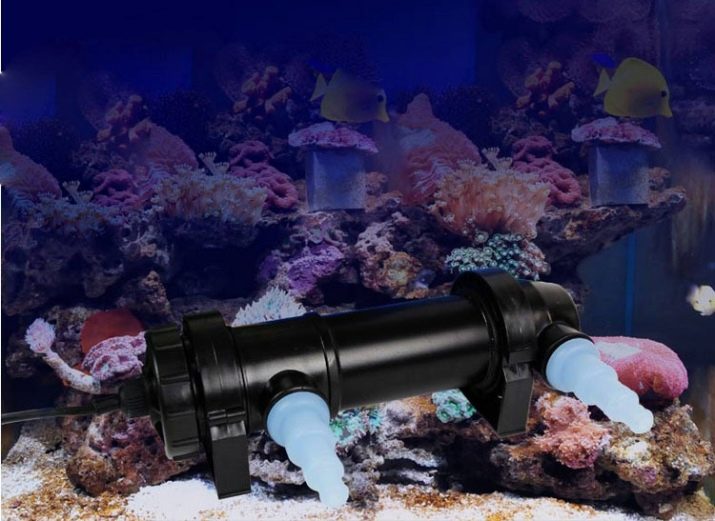
Now about the dangers and controversial aspects of such processing. First of all, it is important to clarify: not therapy, but only prevention. The lamp will reduce various negative processes, but will not completely eliminate them:
- the water will still have to be changed, just not so often;
- using this lamp as a light source is not worth it - which is a lot, it can do harm;
- high power is required, and with its lack, using a lamp is meaningless;
- these devices are expensive and need to be changed frequently.
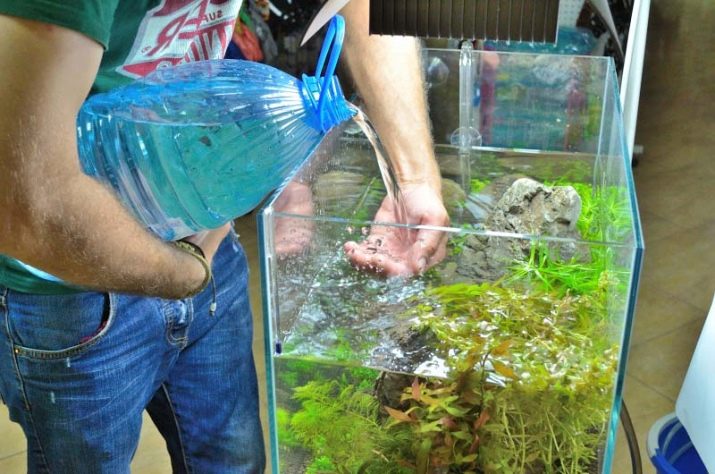
Type overview
UV sterilizers come in a variety of form factors, albeit of a similar type of action. This is very good, because you can choose a device for yourself, based on your ideas about convenience, functionality and beauty.
There are devices that are built directly into the walls of the aquarium. In this case, convenience really comes first. However, sometimes, in order to save money, lamps of low power may be built in, which may not be enough to purify all the water.
Internal disinfectants that are installed inside the filter. This option helps to get rid of some diseases of fish and turtles. The effectiveness of this method is sufficient in most cases, so that your inhabitants do not get sick. In addition, the water will be cleaned not only of dirt, but also of bacteria that provoke pathologies.
Backlit external lamps. This is the most convenient, efficient, beautiful and, unfortunately, expensive type. More often than not, this will look like a pendant lamp right above the aquarium.
Sometimes the device can be adjusted - whether it will work only for backlighting or for cleaning too.
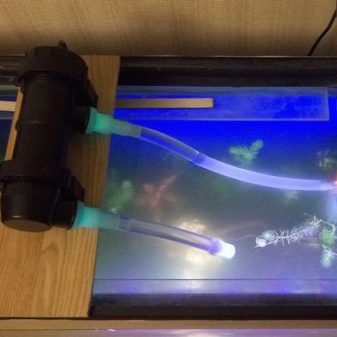
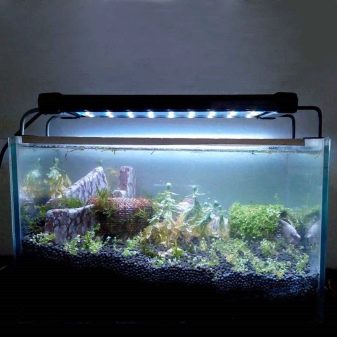
How to choose?
In order to decontaminate the aquarium as efficiently as possible, you should always choose the correct power purifier. The important thing here is what exactly you are going to purify your water from, since different substances require different power.
- To destroy viruses that develop in water, 15,000 μW (microwatt) are enough, which will spread every second to every square centimeter.
- If the goal is larger, and you want to defeat the bacteria, then you should choose a power of no less than 15,000, and even better - up to 30,000, since different bacteria have different protective abilities.
- The same goes for algae - at least 25,000 microwatts.
- The strongest power is needed if you want to defeat the fungus. In this case, you will need at least 45,000 microwatts of power per cubic centimeter of water. And this is already quite an expensive pleasure.
There are additional selection criteria. A good disinfectant should have free ballast available if the application involves immersion in water.
In addition, for ease of use and correct identification of modes, it would be nice to choose a device that has an indicator that notifies about the work.
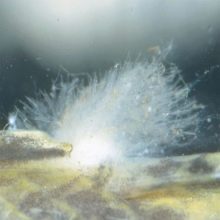
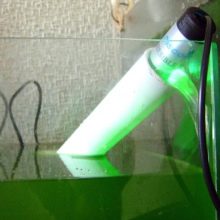
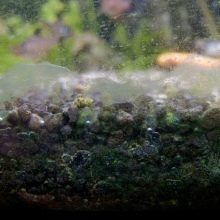
For safety's sake, a good home UV disinfector should be self-regulating. This means that after working for a certain amount of time or after purifying a certain amount of water, the device should automatically turn off.
Sometimes it is not very convenient to just take and immerse such a device in water. The best choice would be to fix this very lamp somewhere. This also applies to security - not the best solution would be to leave electric wires in the water. It would also be nice to have a quartz sleeve available. This will not only increase the efficiency, but also add convenience in use. In addition, if you intend to buy yourself a pendant model, then it will be generally quite convenient, but then the kit must have suitable mounts so that you can hang the entire structure from above.
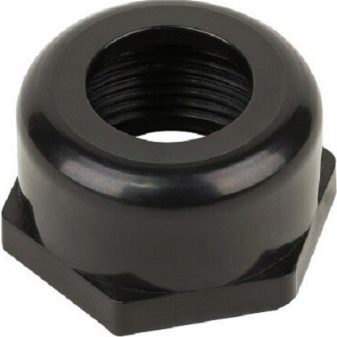
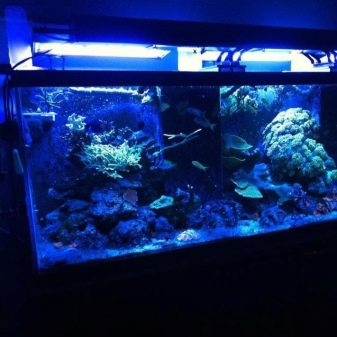
Of course, when buying a new sterilizer complete with it, you must check the availability of a warranty card. This is very important - after all, all devices, except for pendant ones, can fail quickly enough or simply periodically require replacement.
Besides, you It is not at all necessary to buy lamps with a filter. Such a function can add to the cost of the device quite well, despite the fact that this same device is completely unnecessary. The fact is that pathogens are harmful and dangerous only if they are viable. But their "corpses" are completely biologically safe and even pure material, which there is no need for additional cleaning. You will get rid of this when you change the water.
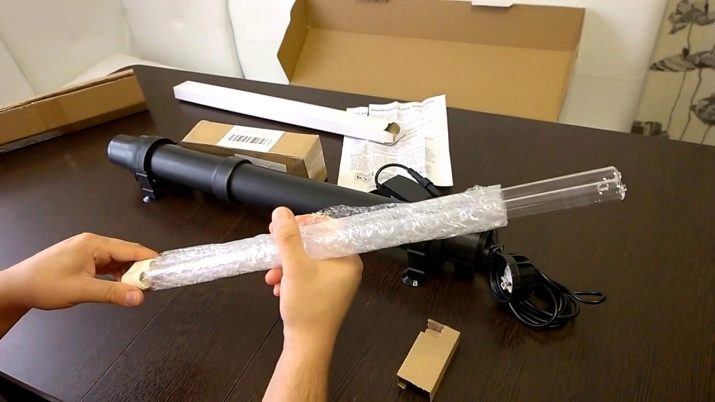
How to use it correctly?
It is important to understand for yourself: the use of this kind of sterilizers is not a full-fledged substitute for water purification itself. Cleaning means changing the water, washing the aquarium, removing excess algae, and so on. Ultraviolet radiation is essentially only an auxiliary preventive measure that can be used at the first suspicion of a deviation from the healthy norm among the inhabitants.
That is, if the inhabitants of an artificial reservoir begin to get sick, then the latter will not be prevented by a course of ultraviolet treatment so that the infection does not spread. However, there are many cases when such technology is, in fact, powerless - for example, if you have small worms or a lot of algae in free swimming. In this case, you will have to work on your own. In addition, given the small size of the aquarium itself and the good health of its inhabitants, it is possible not to use such cleaners at all.
Of course, this only works in the case of regular and high-quality cleaning of the aquarium and everything that is in it (except for living inhabitants).
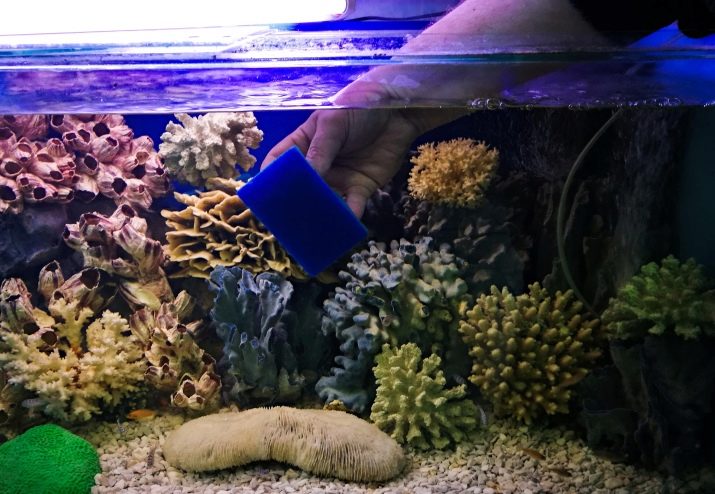
There are a few rules to remember:
- do not look at the working lamp, keep your eyesight;
- do not use such a device without the supplied protective elements;
- use together with the introduction of drugs is prohibited and dangerous for fish;
- excessive generation of ozone can be harmful;
- periodically check the condition of all elements of the device;
- do not forget to clean the flask;
- grounding is a very important element.
The question may arise what will happen if you use an ultraviolet disinfectant constantly. It would seem that the water will remain constantly clean, the residents - healthy, and everything will be fine. But no! In reality, too frequent, and even more so the constant use of such devices is not only not useful, but even harmful.
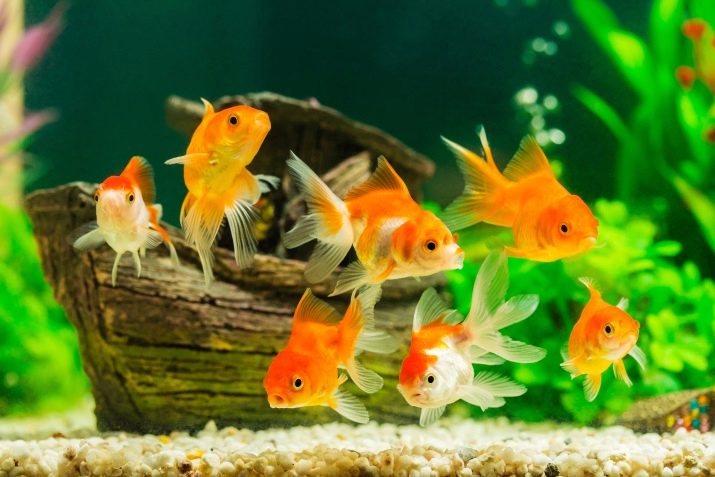
Negativity occurs due to the heating of the water temperature, which adversely affects many of the inhabitants of the aquarium. In addition, each fish has its own immunity, and it is completely undesirable to constantly use its replacement. Otherwise, the defenses will atrophy, and the fish will die at the first deviation from the norm.
Do not use sterilizers when you have just introduced fish into the aquarium, or until then. It can be used only after some time has passed, when the harmful microflora is already formed along with the useful one.
Another very important point is a ban on the use of radiation in conjunction with any medications and fertilizers that you add to the water. Many drugs, under the influence of such devices, react by producing harmful and even dangerous substances for fish and other inhabitants.
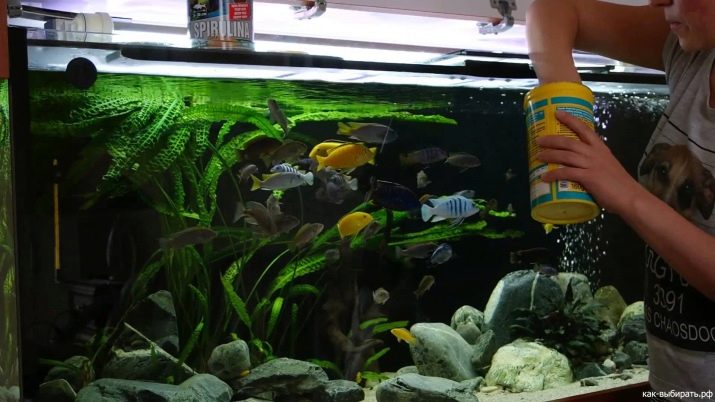
For information on the features of a UV sterilizer for an aquarium, see the following video.








